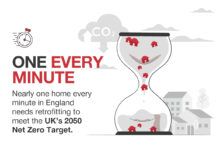
Activity in the construction industry is rising at a faster pace following the EU referendum than initially expected according to the latest forecasts by the Construction Products Association (CPA). Construction output is expected to rise each year between 2017-2019, by 1.3% in 2017, 1.2% in 2018 and 2.3% in 2019.
While the figures may fuel hope of a resilient UK construction industry amid Brexit-related anxieties and rising costs, the growth masks a considerable difference in activity across the key construction sectors. Infrastructure projects are expected to be the industry’s main growth engine, driven by a strong National Infrastructure and Construction Pipeline valued at £300 billion over the next four years.
In particular, growth to 2019 is expected to be primarily driven by a 34.5% increase in infrastructure activity due to major projects in the energy, rail a

nd water sub-sectors, which would offset expected falls in commercial and industrial construction.
House building is also expected to remain a key source of growth, with private house building starts rising by 7.2% between 2017 and 2019, underpinned by a continued upward trend in house prices, demand from first-time buyers and the Help to Buy equity loans. In 2016, Help to Buy accounted for 39.8% of new home sales in Q4 and has been a significant government policy for supporting building activity.
Noble Francis, economics director at the Construction Products Association said: “Construction output has been sustained post-referendum, primarily due to projects signed up to before June 2016. Activity is expected to remain strong in the first half of this year in all the key construction sectors: private housing, commercial, industrial and infrastructure. Looking further forward, a fall in contract awards during the second half of last year, is likely to impact greatest where Brexit uncertainty affects sectors requiring high investment up front for a long term rate of return, such as commercial offices and industrial factories.
“We forecast that output in commercial offices will fall 1.0% this year and a further 12.0% in 2018. Industrial factories construction is expected to fall 5.0% in 2017 and 4.0% in 2018. However, this is expected to be offset by strong growth in infrastructure and private housing. Infrastructure construction is expected to increase by 7.3% in 2017 and 11.1% in 2018, primarily driven by major projects such as main works at Hinkley Point C and High-Speed 2. Private housing starts are forecast to rise 3.0% in 2017 and 2.0% in both 2018 and 2019.
“Looking forward, given the dependence of construction industry growth on activity in the infrastructure and private housing sectors, it is essential that government focuses on delivery of infrastructure projects in its National Infrastructure and Construction Pipeline. In addition, as major house builders are reliant upon Help to Buy equity loans, which are due to end in 2021, it is vital that government outlines its plans early to support house building growth as we approach the end of the scheme.”



